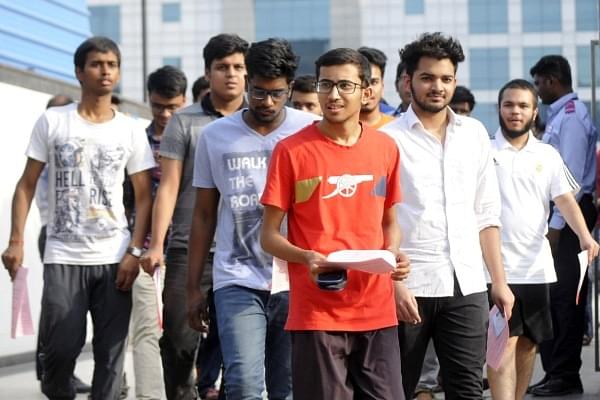Insta
UPSC Civil Services Exam: Topic-Wise Summary Of Economic Survey 2019 For IAS Aspirants - Part II

representative image (Sunil Ghosh/Hindustan Times via Getty Images)
Continuing our series on summary of Economic Survey for UPSC Civil Services Exam aspirants, here is the second part where we cover major factors of an investment-led growth as provided in Chapter 1 of the Economic Survey. You can read Part I here.
In this part, we cover the major factors of the investment-led growth that Economic Survey mentions.
Major Factors in growth- Demographics
- India will remain in “demographic dividend” zone for two more decades
- Increase in working-age population along with decline in fertility increases per capita income as number of dependants decline- there are “fewer mouths to feed”.
- The decline in the number of children by the working generation promotes saving, especially in Asian/Indian cultural context, as they must rely more on savings for retirement in comparison to previous generations
- Saving also increases as a result of a composition effect as most of the savings occur between ages of 40 to 65
- As demographics and wages are the major factors that drive savings, policy-makers can keep the interest rate low enough to promote investment.
Major Factors in growth- Job creation
- The survey says that Indian Economy is dominated by “dwarf” firms, that never grow beyond their small size
- “Dwarfs” account for half of all the firms in organised manufacturing sector, yet their share in employment is only 13.3 per cent, and share in NVA is a miniscule 4.7 per cent.
- Firms that are able to grow over time to become large are the biggest contributors to employment and productivity in the economy
- The Survey makes policy-suggestions to end the incentivisation of remaining a “dwarf” in Indian economy
Major Factors in growth- Financial Sector
- Investment-led growth requires expansion in financial sector- both banks and capital markets
- This quantitative expansion poses the risk of misallocation of capital, as seen in the case of Asian Tigers and even 2008 crisis.
- Our own experience of rapid credit expansion from 2006 to 2012 illustrates the same risk, where the quality of credit sharply deteriorated when the quantity was expanded.
- In this regard, the survey states that banking sector clean-up and IBC are significant reforms whose benefits India will reap during investment-led growth
- It also says that now the foundational reforms are in place, it is time to significantly lower the cost of capital.
Major Factors in growth- Incentive structure for risk-taking
- Policy ambiguities that create collateral damage for genuine risk-takers can affect investments by dampening the animal spirits in the economy
- Systematically lowering the risks faced by investors in India is critical for the success of the investment-driven model for economic growth.
- IBC plays a crucial role in this regard by putting in place a process for reconfiguration of assets following business failure
- Another significant factor is tax policy. Tax on startups, capital gains tax, etc must be rationalised. An optimum tax policy should balance revenue generation with encouraging bonafide tax-payers and punishing malafide ones.
This marks the end of summary of Chapter 1 of the Economic Survey. We will continue with the remaining chapters in later parts.
Introducing ElectionsHQ + 50 Ground Reports Project
The 2024 elections might seem easy to guess, but there are some important questions that shouldn't be missed.
Do freebies still sway voters? Do people prioritise infrastructure when voting? How will Punjab vote?
The answers to these questions provide great insights into where we, as a country, are headed in the years to come.
Swarajya is starting a project with an aim to do 50 solid ground stories and a smart commentary service on WhatsApp, a one-of-a-kind. We'd love your support during this election season.
Click below to contribute.
Latest